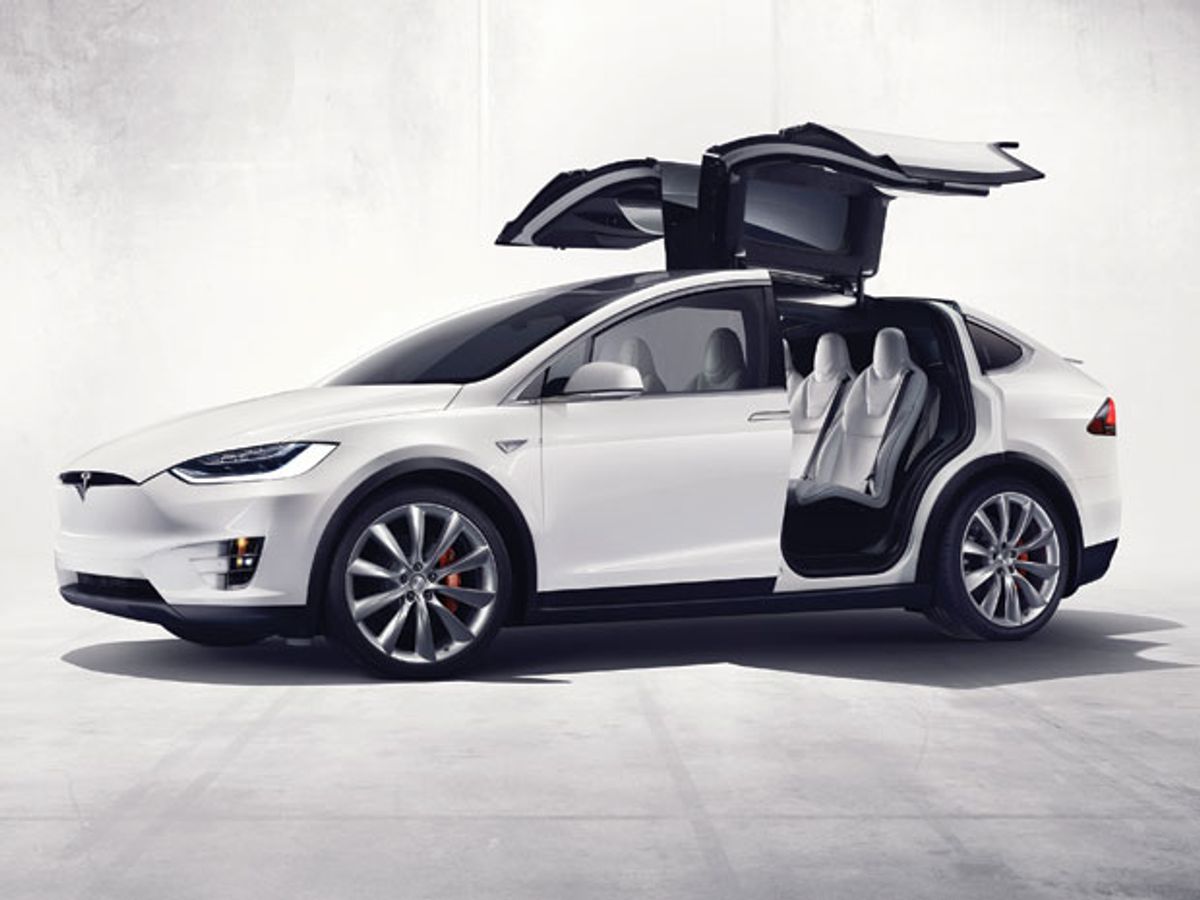2016's Top Ten Tech Cars: Tesla Model X
Just don’t call it a DeLorean

Video: Tesla Motors
With typical hyperbole, Tesla bills its electric Model X as the fastest, safest, and most capable SUV in history. But it’s the falcon doors that take this seven-passenger electric car literally over the top. Those motorized portals rise and fold on complex hinges to make the second and third rows effortlessly accessible, even in a packed parking lot. And they incorporate ultrasonic and capacitive sensors to avoid dinging other cars or obstacles.
The crowd-pleasing doors suggest other technical wonders within. The Model X may weigh 2,470 kilograms (5,441 pounds). But with supercar-like power [see specs, below]—of which 35 percent comes from a front electric motor and the rest from another at the rear—the Tesla will get to 60 miles per hour (97 kilometers per hour) in a claimed 3.8 seconds, or 3.2 seconds in its infamous Ludicrous mode. That’s quicker than a Porsche Cayenne Turbo. Yet the Model X can also cover 414 km—from Frankfurt to Brussels, or Detroit to Toronto—on a single charge. And you can get that charge in 30 minutes using Tesla’s proprietary Supercharger network.
Tesla figures the Model X’s rollover risk is half that of typical large SUVs, because its under-floor battery delivers a limbo-low center of gravity. With no gasoline engine up front, the nose can provide two things: a “frunk” for storage and a giant, energy-absorbing crumple zone.
Price: US $132,000 (P90D version)
Power plant: Dual AC electric motors and lithium-ion battery pack; total 568 kW (762 hp)
Overall fuel economy: 89 mpge, the electric equivalent of one gallon of gasoline (or 2.6 L/100 km)
Like mod diner stools, “monoposto” second-row seats are perched on sturdy motorized pedestals that slide fore and aft and open up bonus room for gear or passengers’ feet. Those falcon doors slide open or closed at the touch of a button. A curving panoramic windshield, the largest on any production car, wraps across part of the roof. A medical-grade HEPA filter sucks up pollen, bacteria, viruses, and pollution.
And in the race toward autonomy, Tesla’s Auto Pilot one-ups the others as the closest thing yet to a self-driving production car. Wrapped in camera, radar, and sonar sensors, the Tesla is the first car to add lane changes to the semi-autonomous repertoire: Flick the turn signal and the Model X checks for an opening and eases left or right. Officially, drivers are supposed to keep mitts on the wheel, but go ahead and try to resist a hands-free, show-offy demo for passengers. “Look, Ma, no hands!”